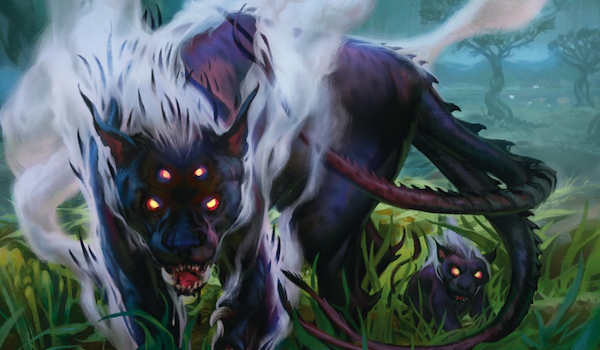Are you a Quiet Speculation member?
If not, now is a perfect time to join up! Our powerful tools, breaking-news analysis, and exclusive Discord channel will make sure you stay up to date and ahead of the curve.
As the year wraps up, the time of self-reflection and empty resolutions begins. My idle mind now wonders if Wizards makes resolutions about card design. I then realize that they design two years ahead, and so if they do make resolutions for the new year, isn't that technically cheating? Or maybe they're focused on using last year's mistakes to improve the design two years from now. And now I'm thinking that I've been hitting the eggnog way harder and earlier than anticipated. So let's wrangle this back on track and reflect on Modern in 2021. In doing so, we'll also turn my eye to what may happen in 2022. Because speculation is always more fun than reflection.
Modern changed significantly in 2021. It began with a disaster that led to the largest ban since Modern's inception. Then Modern Horizons 2 was released, which wasn't busted like MH1, but rather had a very high (though fair) power level. The format is gradually stabilizing but remains in a state of relative flux. And if the trends in December's data continue, the churn won't subside anytime soon. Consequently, 2021 was a mercurial year metagame-wise. There is a lot to like about the current state of Modern. There is also much to dislike. Frequently, they're the same things. It depends on who's being asked. Naturally, since I'm the one writing this article, my own tastes will factor heavily in the "goods" and "bads" discussed here.
The Good
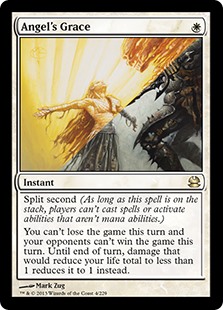 First off, let me be unequivocal: The State of Modern is good. I addressed this back in October, but a format isn't unhealthy just because something's happening that a given player dislikes. There will always be complaints about every metagame in every format. That's just how Magic players do; fish gotta swim, grass gotta grow, Magic players gotta complain about something. Sometimes it's justified criticism of bad design/metagames, sometimes it's just salty whining, and often it's something in between. Players find certain metagames healthy because they're having fun, but a different group that isn't having fun will see it as unhealthy. But it doesn't matter. The existence of objections does not disqualify a metagame from being good. The measure must come from less subjective metrics.
First off, let me be unequivocal: The State of Modern is good. I addressed this back in October, but a format isn't unhealthy just because something's happening that a given player dislikes. There will always be complaints about every metagame in every format. That's just how Magic players do; fish gotta swim, grass gotta grow, Magic players gotta complain about something. Sometimes it's justified criticism of bad design/metagames, sometimes it's just salty whining, and often it's something in between. Players find certain metagames healthy because they're having fun, but a different group that isn't having fun will see it as unhealthy. But it doesn't matter. The existence of objections does not disqualify a metagame from being good. The measure must come from less subjective metrics.
Health by Metrics
The most objective means of evaluating format health are diversity, dynamism, and competitiveness. These are consensus criteria, developed over years of numerous writers working on the question of what makes a format healthy. And while there is certainly room for improvement, the current Modern metagame does quite well by these standards.
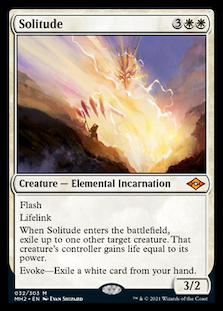 Diversity: If number of distinct decks is the only measurement, then I don't think it's possible for Modern to be more diverse. The average number of decks I record per month is ~70, with an average of ~17 making the tier lists. While that's great, diversity isn't just the number of decks, but also the variety of strategies. And Modern has also done quite well there. Over the course of the year there have many different midrange, control, aggro, and tempo decks. Modern has consistently lacked combo decks, particularly unfair combo. Fair combos like Heliod Company, 4-Color Indomitable Creativity, and Living End have had their moments, but all fell off. Modern could use more consistency from the fair combo and unfair combos like Ad Nauseam to truly round out the metagame.
Diversity: If number of distinct decks is the only measurement, then I don't think it's possible for Modern to be more diverse. The average number of decks I record per month is ~70, with an average of ~17 making the tier lists. While that's great, diversity isn't just the number of decks, but also the variety of strategies. And Modern has also done quite well there. Over the course of the year there have many different midrange, control, aggro, and tempo decks. Modern has consistently lacked combo decks, particularly unfair combo. Fair combos like Heliod Company, 4-Color Indomitable Creativity, and Living End have had their moments, but all fell off. Modern could use more consistency from the fair combo and unfair combos like Ad Nauseam to truly round out the metagame.- Dynamism: Modern is doing well in terms of dynamism, but again there's room for improvement. The exact composition of each tier has changed extensively month to month and the decks doing well now are nothing like the decks from March. That's a lot of churn and dynamism, which is good. It means the diversity is meaningful and anything can win. However, Hammer Time has been the #1 deck on my list since July. Sometimes Hammer has just pipped its rivals; sometimes it dominated. Having one deck sitting on top for long stretches isn't great, and it would be better if other decks beat Hammer for the top slot, but everything else looks good.
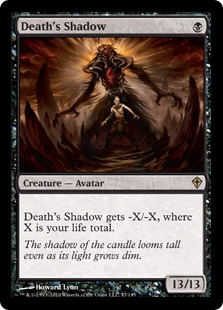 Competitiveness: Every week since March, my data has reflected a wide spread of decks winning both the Preliminaries and the Challenges. Frequently, a deck will have a great weekend and win big in both Challenges only to disappear the next week as rivals show up with the tools to dethrone them. Therefore 2021 Modern was very competitive. This is excellent for maintaining interest in Modern and bolsters the conclusions from dynamism and diversity.
Competitiveness: Every week since March, my data has reflected a wide spread of decks winning both the Preliminaries and the Challenges. Frequently, a deck will have a great weekend and win big in both Challenges only to disappear the next week as rivals show up with the tools to dethrone them. Therefore 2021 Modern was very competitive. This is excellent for maintaining interest in Modern and bolsters the conclusions from dynamism and diversity.
Everything's looking good. It's not perfect, but nothing ever truly is. Modern's healthy: rejoice!
It Finally Happened
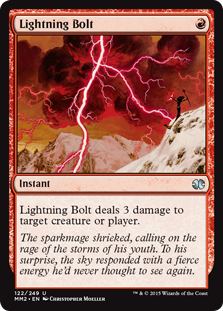 There's also a lot to like qualitatively. Remember how players complained for years that Modern was just ships passing in the night, was far too linear and/or combo driven, or just lacked interaction? That is decidedly not the case anymore. Lightning Bolt and Prismatic Ending, interactive cards, are two of the most played cards in the whole format. In fact, most of the top played spells for the whole year have been interactive. This interactivity has led to an era of fair decks dominating the format. It's harder now than at any point in Modern history to get away with linearity thanks to all the options for interaction, and it shows. This is perfectly fair Modern, at long last!
There's also a lot to like qualitatively. Remember how players complained for years that Modern was just ships passing in the night, was far too linear and/or combo driven, or just lacked interaction? That is decidedly not the case anymore. Lightning Bolt and Prismatic Ending, interactive cards, are two of the most played cards in the whole format. In fact, most of the top played spells for the whole year have been interactive. This interactivity has led to an era of fair decks dominating the format. It's harder now than at any point in Modern history to get away with linearity thanks to all the options for interaction, and it shows. This is perfectly fair Modern, at long last!
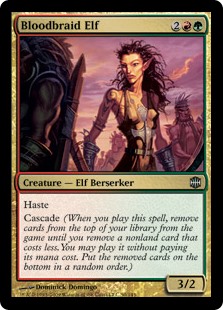 Now, this reality is not without detractors. The loudest grumbling is that it required a glut of free spells to happen. Players wanted interaction and fairness to happen, but not like this, or in this way. What I get from that is that they wanted 2018 Jund-style fair. Not much card advantage; just card quality and tempo to gradually build advantage until victory. While I can sympathize with the nostalgia, that was never in the cards. One, despite Wizards designing with that in mind for years, it just wasn't happening. Two, Wizards has by now moved away from that entire philosophy. They want players to use more of their deck in a game, and when slowing things down didn't work, they moved to expanding velocity. And that's proving to not be intrinsically bad.
Now, this reality is not without detractors. The loudest grumbling is that it required a glut of free spells to happen. Players wanted interaction and fairness to happen, but not like this, or in this way. What I get from that is that they wanted 2018 Jund-style fair. Not much card advantage; just card quality and tempo to gradually build advantage until victory. While I can sympathize with the nostalgia, that was never in the cards. One, despite Wizards designing with that in mind for years, it just wasn't happening. Two, Wizards has by now moved away from that entire philosophy. They want players to use more of their deck in a game, and when slowing things down didn't work, they moved to expanding velocity. And that's proving to not be intrinsically bad.
All Are Welcome
As a result, Modern feels quite inclusive. Except for the price tag, but Magic is an intrinsically 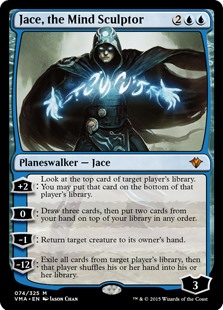 expensive hobby. Complaining about the price of entry may be valid, but that's how it is for every format these day. The price of success is high demand for product and that will drive up prices. This is the reality for Magic players now.
expensive hobby. Complaining about the price of entry may be valid, but that's how it is for every format these day. The price of success is high demand for product and that will drive up prices. This is the reality for Magic players now.
Looking past that issue, it seems Modern has something for everyone. There's a lot of choice and opportunity for every kind of player to find their deck and succeed. Combo is underrepresented in the data, but there are viable combo decks out there. Every FNM, I see different builds of control, midrange, ramp, and aggro, and players are changing their decks week to week and being rewarded. All over the Magic media, players are saying that this is the most fun they've ever had in Modern. They appear to vastly outweigh the doomsayers. And I can think of no better endorsement.
Storm Clouds Brewing
 That said, I do see storm clouds on the horizon. The storm isn't guaranteed to make landfall, and it could even dissipate entirely. But I can definitely envision this metagame swerving south into unhealthy territory. And worse, it could do so without help from new cards. There's always a risk that a new card will break everything, and I can't predict that happening. What I can do is look at the current trends and see if there's anything heading in dangerous directions or that may cause problems. And I'm seeing three pressure points in the data which make me very worried.
That said, I do see storm clouds on the horizon. The storm isn't guaranteed to make landfall, and it could even dissipate entirely. But I can definitely envision this metagame swerving south into unhealthy territory. And worse, it could do so without help from new cards. There's always a risk that a new card will break everything, and I can't predict that happening. What I can do is look at the current trends and see if there's anything heading in dangerous directions or that may cause problems. And I'm seeing three pressure points in the data which make me very worried.
I should note that this concern does apply more to MTGO than paper. MTGO's player base being much smaller, it lends itself to feedback loops and groupthink which in turn lead to warps in the metagame. With paper coming back I expect the metagame to get far more stable and prone to self-correction rather than over-correction. But we'll all have to wait and see.
The Lurrus Problem
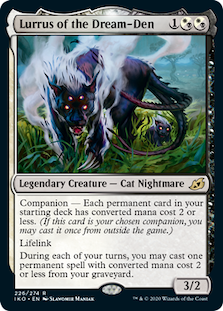 The first problem is that Lurrus of the Dream Den is everywhere. Lurrus is the most played creature in Modern by a decent margin. This is in spite of it seeing vanishingly small amount of maindeck play. Rather, it sees an absurd amount of play as a singleton in sideboards thanks to companion. Last year, Lurrus took Hammer Time, a deck that was fringe playable at best, and gave it the power to hang in with 4-Color Uro Omnath decks. Access to Lurrus every game is a major reason why Hammer Time has managed to hang onto its top slot in Modern alongside Urza's Saga. Lurrus seeing a lot of play isn't a bad thing (opinions on the companion mechanic itself notwithstanding) because it boosts a lot of different decks and creates a lot of space for small creature decks to compete.
The first problem is that Lurrus of the Dream Den is everywhere. Lurrus is the most played creature in Modern by a decent margin. This is in spite of it seeing vanishingly small amount of maindeck play. Rather, it sees an absurd amount of play as a singleton in sideboards thanks to companion. Last year, Lurrus took Hammer Time, a deck that was fringe playable at best, and gave it the power to hang in with 4-Color Uro Omnath decks. Access to Lurrus every game is a major reason why Hammer Time has managed to hang onto its top slot in Modern alongside Urza's Saga. Lurrus seeing a lot of play isn't a bad thing (opinions on the companion mechanic itself notwithstanding) because it boosts a lot of different decks and creates a lot of space for small creature decks to compete.
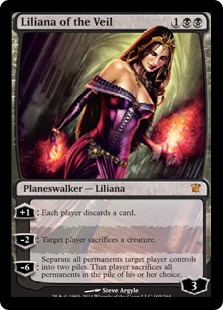 The problem is that Lurrus is crowding out a lot of cards. Permanents costing three-plus mana aren't seeing play in decks where they used to, and that's entirely down to Lurrus. Look at Grixis Death's Shadow and Jund trading in the once non-negotiable maindeck Liliana of the Veil for Lurrus as a companion. Liliana is still a very strong card and useful in many matchups, but the appeal of Lurrus always being available in addition to its interaction with Mishra's Bauble is not something she can match. Consider also that Lurrus is keeping certain answers out of Modern. Fatal Push has been largely abandoned, in no small part thanks to competition from Prismatic Ending and Unholy Heat. However, it had been on the decline even before MH2 thanks to lining up poorly against Lurrus' ability.
The problem is that Lurrus is crowding out a lot of cards. Permanents costing three-plus mana aren't seeing play in decks where they used to, and that's entirely down to Lurrus. Look at Grixis Death's Shadow and Jund trading in the once non-negotiable maindeck Liliana of the Veil for Lurrus as a companion. Liliana is still a very strong card and useful in many matchups, but the appeal of Lurrus always being available in addition to its interaction with Mishra's Bauble is not something she can match. Consider also that Lurrus is keeping certain answers out of Modern. Fatal Push has been largely abandoned, in no small part thanks to competition from Prismatic Ending and Unholy Heat. However, it had been on the decline even before MH2 thanks to lining up poorly against Lurrus' ability.
And this is all down to Lurrus uniquely. In late October, there was a shift in Hammer Time away from Lurrus and towards a higher curve with Nettlecyst. The idea was to have more threats and dodge some answers. It didn't work. The Lurrus version soundly outperformed the Nettlecyst version in November. I recorded 17 Nettlecyst decks with an average of 1.41 points to 45 Lurrus versions with an average of 1.87 points. This trend has continued this month and is replicated with the Jund and GDS decks.
That Annoying Monkey
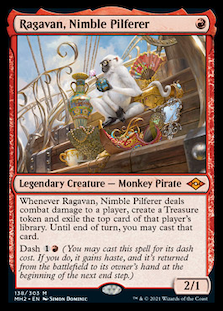 Ragavan, Nimble Pilferer is the second most played creature in Modern (#1 in maindecks) and is quite controversial. There are decent arguments that Ragavan is good for Modern. The primary reason is that it requires decks to have turn 1 interaction or block. It also only benefits fair decks, dies to anything, and has to connect so to do anything. Even if it does connect once or twice, it's not the end of the world.
Ragavan, Nimble Pilferer is the second most played creature in Modern (#1 in maindecks) and is quite controversial. There are decent arguments that Ragavan is good for Modern. The primary reason is that it requires decks to have turn 1 interaction or block. It also only benefits fair decks, dies to anything, and has to connect so to do anything. Even if it does connect once or twice, it's not the end of the world.
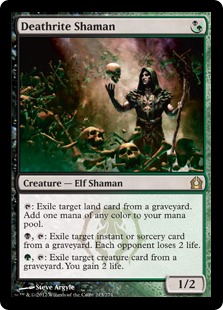 The problem I have is that many of those arguments were made in favor of Splinter Twin and Deathrite Shaman, both banned cards. The problem is that just like Shaman, unanswered Ragavan generates in insurmountable mana advantage. Just like Twin, there's no evidence other than anecdotes that Ragavan actually does force more interaction to happen. Ragavan was printed at the same time that a lot of answers were printed. Modern would be more interactive anyway and the effect Ragavan is having can't be separated from the altered carpool. And that's a problem because Ragavan is starting to appear everywhere, and that's a worry. So far this month I've seen Ragavan in the usual UR Murktide, Jund Saga, and GDS but also in Ponza, Humans, Jeskai Underworld Breach Combo, otherwise tribal Elementals, and 4-Color Omnath Pile to name the memorable few. This is getting to saturation levels.
The problem I have is that many of those arguments were made in favor of Splinter Twin and Deathrite Shaman, both banned cards. The problem is that just like Shaman, unanswered Ragavan generates in insurmountable mana advantage. Just like Twin, there's no evidence other than anecdotes that Ragavan actually does force more interaction to happen. Ragavan was printed at the same time that a lot of answers were printed. Modern would be more interactive anyway and the effect Ragavan is having can't be separated from the altered carpool. And that's a problem because Ragavan is starting to appear everywhere, and that's a worry. So far this month I've seen Ragavan in the usual UR Murktide, Jund Saga, and GDS but also in Ponza, Humans, Jeskai Underworld Breach Combo, otherwise tribal Elementals, and 4-Color Omnath Pile to name the memorable few. This is getting to saturation levels.
And that's an additional problem because as much fun as Ragavan is to play, it isn't fun to play against. It is fun beating opponents with their cards; it sucks just as much to lose to your own cards. This is a really big problem in light of the earlier point. Players generally don't like getting hit with Ragavan and if they're not having fun against a card that is now everywhere, are they going to keep playing?
Just More Piling On
However, my biggest worry is the aforementioned 4-Color Omnath Piles. Specifically, they're coalescing. In November, there were several distinct versions of 4-Color Omnath and many different 4-Color decks. There was nothing wrong with this as they represented very different playstyles and strategies. There's also nothing wrong with multicolor piles in general because in a strong way, that is Magic-as-Richard-Garfield-Intended. He never saw the game getting this big and thought that players just playing all the cool cards together in the same deck would be how the game would go. Which is the entire pile strategy.
 The problem is that piles tend to push out anything else at the same speed. Why bother trying to do anything else when you can just play the best card at every mana cost? That was a contributing factor in the demise of Frontier. The mana was so good and there was no land hate so there was no reason not to just run all the best cards in the same deck, at which point there was no incentive to run a slow deck that wasn't a 4-Color pile. Some decks would go 5-Color to get an edge, but that was it. The same thing happened with the Uro decks last year. The piles took over all the slow deck space and forced everyone to either go over or under them. It's happening again because UW Control can't compete with 4-Color's raw power and 2-for-1's and is floundering in December.
The problem is that piles tend to push out anything else at the same speed. Why bother trying to do anything else when you can just play the best card at every mana cost? That was a contributing factor in the demise of Frontier. The mana was so good and there was no land hate so there was no reason not to just run all the best cards in the same deck, at which point there was no incentive to run a slow deck that wasn't a 4-Color pile. Some decks would go 5-Color to get an edge, but that was it. The same thing happened with the Uro decks last year. The piles took over all the slow deck space and forced everyone to either go over or under them. It's happening again because UW Control can't compete with 4-Color's raw power and 2-for-1's and is floundering in December.
Specifically, all the 4-Color Omnath decks have become 4-Color Blink. Some lean into Ephemerate more than others, but they all intended to gain absurd value from blinking Omnath. They've all got the same core of planeswalkers, Omnath, Solitude, and Prismatic Ending, and all win via attrition. 4-Color Control is just gone, and both 4-Color Creativity and Bring to Light are below the tier cutoff. There's little Tribal Elementals either. And that's a huge threat to diversity.
Three Possible Outcomes
As I said, this storm isn't actually here yet. It's just building. It might not even hit Modern. But we do need to be aware and try to prepare. I foresee three possibilities: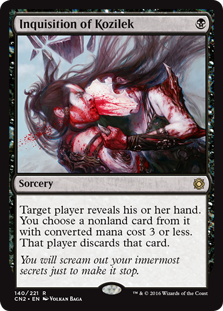
- The Near Miss - This is where Modern self-corrects and no intervention is necessary. I would prefer this outcome and believe it possible, but players will need to do the work to make it reality. First, we need more unfair combo decks in Modern. Belcher is a good option, but anything will do. We just need decks that actually don't care about Ragavan hits and go way over the top of anything fair. This will force both the 4-Color decks and the Lurrus decks to diversify their answers and stop focusing on grinding each other out. There will also need to be a better Blood Moon deck to contain and punish 4-Color's manabase. Ponza is too slow and Murktide isn't consistently running Moon.
- The Storm Dissipates - There was never a real problem, it was just MTGO being MTGO. Online players just got it in their heads that this is how Modern is to be and ran with it. Paper results start to come in a refute the conclusions of the streamers and grinders and the format opens back up. Players adjust to the new cardpool and discover new strategies that obviate the current trends.
- Direct Hit - This plays out just like it did with Uro, Titan of Nature's Wrath. There's just too much power in the 4-Color decks and their mana is too good to overcome in a fair way. This forces other decks to lean more heavily into Ragavan and Lurrus to compete and the format becomes polarized. Many bans ensue.
Outlook: Uncertain
I don't know how this will actually play out. But I'm hoping that we can all learn to deal with Modern as it is and that everything will work itself out. But we have to see. However, next week will consider the third scenario.


